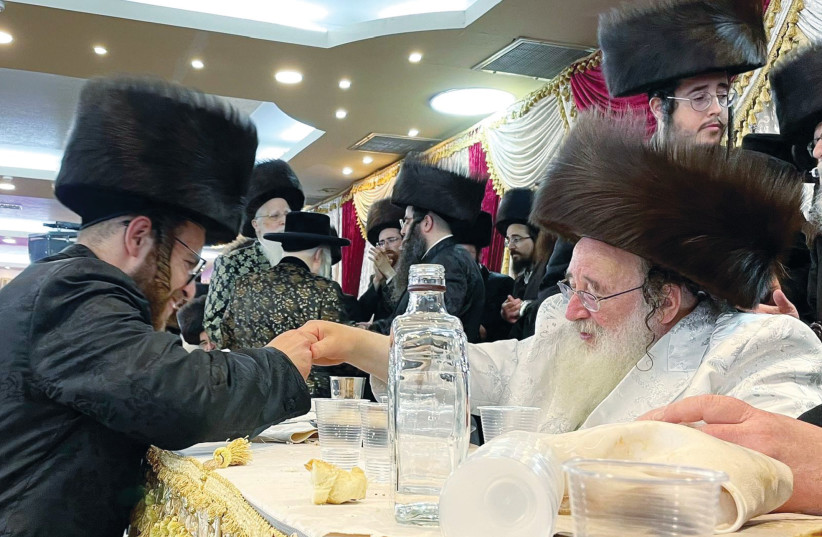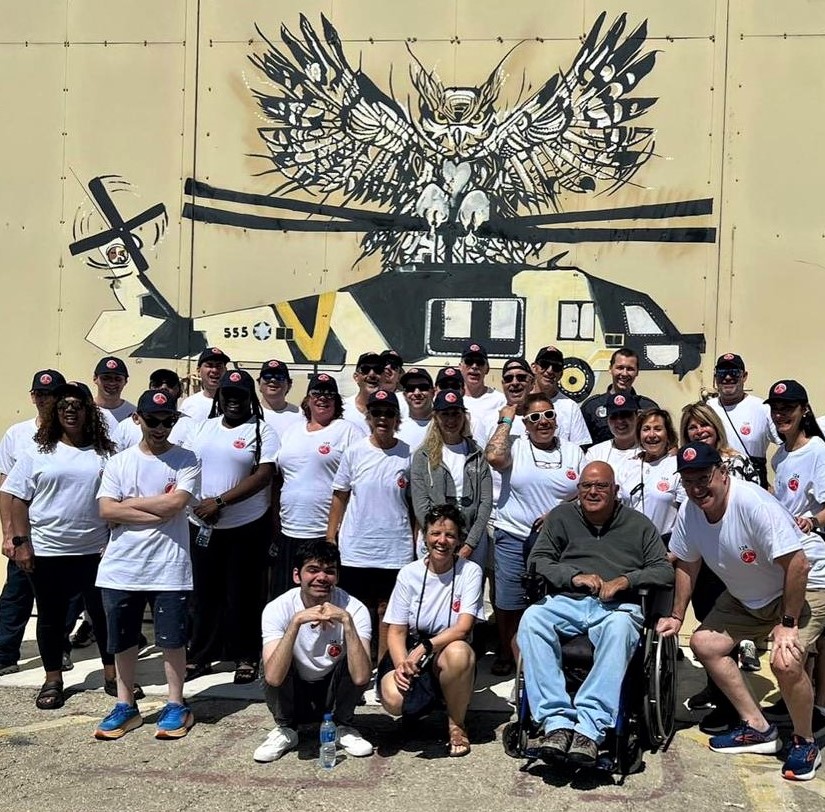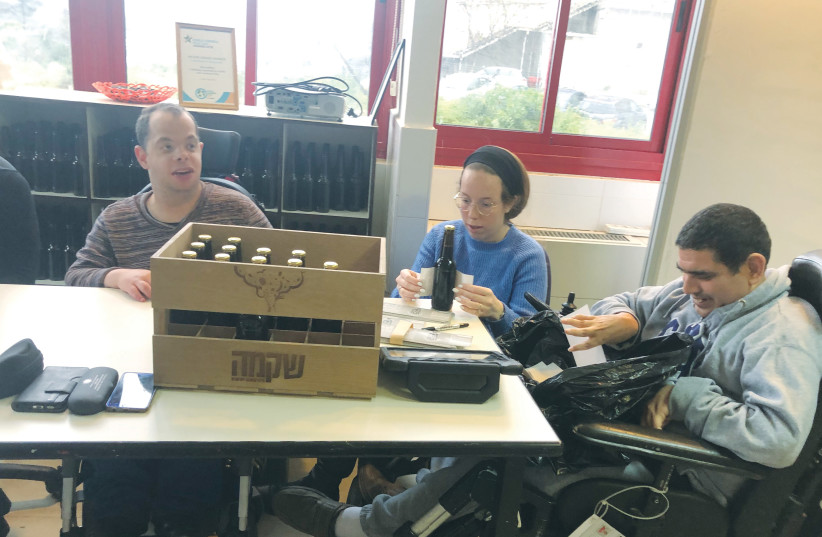Original Article Published On The Jerusalem Post
Bronstein’s daily Spanish-language videos – 443 in total to date – have quite a following, with 106,000 subscribers.
Meir Bronstein is not your typical hassid. He is also not your typical YouTuber.
His sweet demeanor, his grasp of Judaism, literature and secular topics, his sense of humor, and his disarming smile have made him a rock star among Spanish-speaking YouTubers. He clearly, openly and proudly teaches his followers about every aspect of Judaism and Hassidism. His most successful YouTube video, Five Jewish Solutions That Will Change Your Life, has attracted 392,000 views.
Bronstein grew up a secular, somewhat rebellious son of prominent Masorti Rabbi Guillermo Bronstein in Lima, Peru. He lived there for 22 years before moving to Argentina to study literature. When the university fell on hard times and closed during an economic downturn in 2017, Bronstein admits, “I was very lost. I had no place to go.” He called his father for guidance, who advised him to reach out to Rabbi Isaac Sacca, the Sephardi chief rabbi of Buenos Aires, as well as founder and president of Menora, an organization catering to young people and ba’alei teshuva (those looking to become more observant).
“I went to Menora and started to learn Talmud and Jewish things and Halacha [Jewish law] and whatever. The intense studies attracted me, and I realized I wanted to be a frum Yid [religious Jew].” When Bronstein was considering becoming a hassid, he had a flashback to an experience he had more than a dozen years ago in Israel.
“In 2007, I was 10 years old and in Israel for the first time. We were in [the Jerusalem neighborhood of] Bayit Vagan for my sister’s wedding. It was 4 p.m. on Friday and we were on the balcony. I saw hats and long beards – and I listened.”
WITH THE Spinka Rebbe. (credit: Courtesy Meir Bronstein)
Bronstein smiles and breaks out into a niggun, a melody, which he hums and sings. “I looked up and saw a beautiful family of hassidim wearing spodeks [black fur hats]. I started listening and asked, ‘Who are these people?’ I saw myself in them. I felt my neshama [soul] – it was a very moving experience.” Without missing a beat, Bronstein makes a reference to Rudolph Otto, the German Lutheran theologian and writer who penned dozens of books including some of which have been cited by such Jewish theologians as rabbis Joseph Soloveitchik and Eliezer Berkovits.
He checks his iPhone for the English name of one of the theologian’s books. “Rudolph explains that you can feel God in a place where people live a life of God. He got there because he entered a shul in Germany at Kol Nidre on Yom Kippur, felt the atmosphere and realized that God is there.” Bronstein connects Rudolph’s experience to his own. “So I felt the same. I felt so attached to them [the hassidim]. That feeling stayed with me my whole life.”
Bronstein recalls realizing just how different he was from others his age. “It was the first years of YouTube. My friends used to watch, I don’t know, the funniest falls, the funniest interviews. I used to watch the Satmar Rebbe dancing with his granddaughter, the Bobover Rebbe making Kiddush… I used to watch the videos of rebbes all day.”
“These hassidic ideas stayed with me my whole life and I said to myself, ‘When I am 70 or 80 years old, I want to be hassidish – not now, because I will need to stop using a smartphone on Shabbes, and many [other] things I don’t want [to give up]…”
His time frame for becoming religious quickly moved up. “When I went to Argentina, these things started to happen, I started my teshuva process.” And Bronstein immediately began the process of becoming observant.
Coming to Israel and becoming a hassid
Bronstein came to Israel on scholarship in the winter of 2018 at age 23 to study in a yeshiva. He admits he didn’t really come to study. He ate breakfast with the other students, attended one shiur (class) and “escaped to Mea She’arim or Geula [in Jerusalem] to meet hassidim, learn what a rebbe is, etc.”
Bronstein had a pivotal experience one day at the yeshiva. “One Friday, a guy in the yeshiva, Yoel Moshe, told me he had an uncle who was a Satmar [Hassid] and invited me to come eat with them for Shabbes.” Bronstein went to a Boyaner shul in Geula. “I will never forget the experience. I felt like I traveled back to a previous life in the shtetl – the people, the dress, the shtreimels [fur hats.]”
The crowning achievement was his unexpected meeting with the Boyaner Rebbe at the conclusion of services. “I wanted to meet the rebbe, but he wasn’t there. We waited, and he came out. He is very humble and never looks up. He said ‘Gut Shabbes’ and shook our hand and continued walking. That was an amazing moment in my life. At that moment, I knew I wanted to be hassidish!”
Bronstein recounts that he didn’t aspire to be a hassid when he was younger. “As a kid, I wanted to be a writer and movie director.” He acknowledges that he published a book when he was 20 but was too embarrassed to elaborate. “Don’t ask what it is about. I am not so proud of it.”
After his experience with the Boyaner Rebbe in Israel and his growing interest in hassidim, Bronstein returned to Peru to consider his next move. He knew that hassidim lived all over the world. His father helped him realize, “When the mashiach [Messiah] comes, we will all need to go to Israel. And all rebbes go there sooner or later.” In Peru, he began the aliyah process.
A female Jewish Agency representative, hearing that hassidism and rebbes were the motivating factors for his making aliyah, suggested that he not make aliyah straightaway – rather he spend one year in Israel on a MASA program, experience the country, and then decide if aliyah was right for him.
Bronstein’s Israel plans changed – unbeknownst to him – while he was flying to Israel. When he showed up at the yeshiva where he was expecting to study for the year with all his luggage in tow, he was told by the yeshiva that they “didn’t want a hassid” and he was not actually accepted. What was he to do? He remembered he had a friend in Rehavia, who invited him to come over right away. (Bronstein smiles, saying he stayed there for three months!)
That frustrating first day in Israel quickly turned around, Bronstein says. “I was exhausted and slept from like 10 a.m. until 5:50 p.m. I woke up refreshed. I don’t know why, but I felt I needed to daven Mincha [pray the afternoon service] right away. I asked my friend for the closest shul, and he directed me to one around the corner. The first person I saw was the Boyaner Rebbe! He was at a conference nearby and stopped by to pray. I got to him like that! He said he remembered me, gave me the phone number of his gabbai [assistant)] and encouraged me to come to his shul, visit and reach out if I needed anything.”
Bronstein’s path to becoming a Boyaner Hassid continued. He had been caring for an elderly man through the yeshiva, then COVID hit, and he was no longer able to work. “I had nothing to do. It was a hard time. I got very depressed.”
Getting into YouTube after reacting to the Netflix show Unorthodox
BRONSTEIN DISCOVERED the Netflix show Unorthodox, a miniseries about a 19-year-old Satmar Hassidic woman who is unhappy living a religious lifestyle in Williamsburg, Brooklyn – and flees. “At the same time, I started getting messages from friends in Peru and Argentina who heard I was becoming a hassid and asked if it was true or not. I decided to make a video – from a person IN hassidut – explaining what is true and what is not in Unorthodox.”
One video led to Bronstein creating many videos. “I didn’t know it would go from two to three to 500 to 1,000 to 2,000, whatever – people viewing the videos!” A Latin friend who was a successful YouTuber went to Bronstein’s house and encouraged him to keep making videos about how a Latin American guy became hassidic.
There was one problem, however. “This thing clashed with Boyan – they are very regular haredi, ultra-Orthodox who don’t accept technology. People respected me for what I was doing, and the Boyaner Rebbe reluctantly permitted it. He said, ‘This is your parnassah [livelihood], but be aware – this isn’t a good thing and it could create problems. You should try to find other work.”
Bronstein was in a bind. On one hand, he loved making videos. On the other hand, his rebbe wasn’t exactly supportive. “I didn’t know what to do.” The well-informed Bronstein brings examples of other well-rounded people – from modern times and from the past – who lived in both the religious and secular worlds, such as Rabban Gamliel in the Talmud, Maimonides and Rabbi Dr. Abraham J. Twerski. “I was inspired by Rabbi Twerski,” a hassid and psychiatrist specializing in substance abuse.” Bronstein really wants to show the world that it’s possible to be a haredi who uses YouTube and smartphones for good, and that one can learn secular and Jewish topics and not stop being Jewish, and particularly haredi.
Bronstein was still not sure what to do. He was stuck at home during the quarantines and badly wanted to speak with the Boyaner Rebbe. His gabbai informed him that the rebbe was spending time with his family. “Call a rabbi,” his gabbai said. “I wanted to speak with a rebbe, not a rabbi!”
Then Bronstein met a hassidic psychologist. “Maybe you can help me,” he said. “I am going crazy!” He was delighted by the psychologist’s suggestion to join a Zoom meeting with the Spinka Rebbe that night. “A Zoom with a rebbe?” Bronstein thought to himself, “I’ve never heard of this – I’ve heard of people recording a rebbe in secret but never this. It was true! A rebbe teaching Rashi, with his computer, on Zoom!” Bronstein approached the rebbe after the September 2020 class. “I got convinced.”
“THAT WAS the haredi path I should follow, so I left Boyan.”
Bronstein has been happy with his decision, noting that everyone is accepted and that even people from his previous Boyaner hassidic community have been nice.
And the Spinka Rebbe has been accepting and supportive of his love of YouTube. “When I realized you can show hassidus on YouTube, I asked the rebbe if I could maybe show more private things about hassidim. The Spinka Rebbe said, ‘Come to my house and record what you want!” Bronstein has recorded a halike, a first haircut ceremony held when a Jewish boy turns three, at the rebbe’s house and the Sheva Brachot of his granddaughter.
Bronstein is delighted that he has found a place where he can be accepted and where he can teach people about all aspects of Hassidism. At the same time, he acknowledges that many on YouTube think he is “doing a hilul Hashem [desecrating God’s name].” In any case, “They see that I am not the average hassid!”
His viewers include secular Jews and non-Jewish Bnei Noah – Noahides who see themselves as required to observe the Seven Laws of Noah to be assured of a place in the World to Come.
Bronstein’s daily Spanish-language videos – 443 in total to date – have quite a following, with 106,000 subscribers. His most popular videos include Five Jewish Solutions That Will Change Your Life (392K); An Orthodox Jew Reacts to Argentine Humor (372K); The Ultra-Orthodox Neighborhood Nobody Has Dared To Enter (195K); and Interview with Ximena Orozco, the Actress Who Left Everything for Torah (and her conversion story). [https://www.youtube.com/@meirbronstein]
Bronstein and his wife of 10 months, Odel (“like the daughter of the Ba’al Shem Tov,” Bronstein adds), are happy living in Israel but admit “It is so expensive and difficult to live here.” He playfully yet seriously observes, “The banks take NIS 20 fees for nothing. There is a fee for this, a fee for that, a fee for breathing!” Bronstein advises olim, “Come with money, keep money in other countries, and come with Hebrew – even if it is from Duolingo!” He acknowledged that he learned Hebrew in ulpan but doesn’t speak fluently.
Bronstein and Odel hope to stay in Israel but are considering short-term teaching and keiruv (outreach) opportunities abroad “if the right opportunity comes.”
Meir Bronstein, 27 From Peru to Argentina to Jerusalem, 2019









